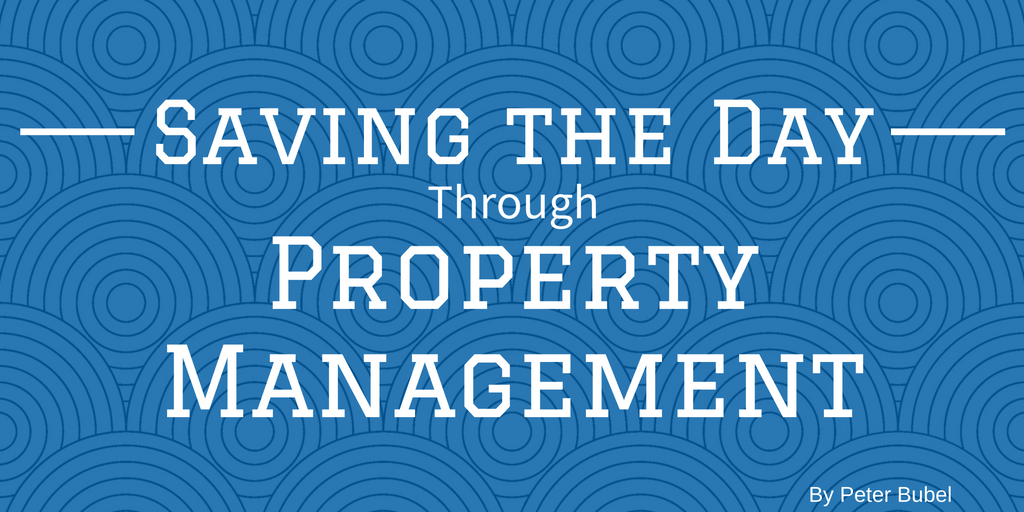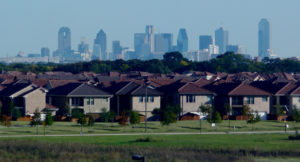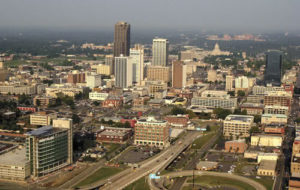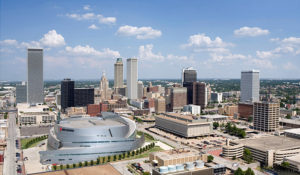
Peter Bubel+ by | Dec 6, 2016 | Blog, Peter Bubel, Property, Real Estate, Travel
In the dead of winter, it’s tempting to sell off everything you own to move to a tropical, exotic location whose atmosphere is a complete 180 from where you are now. Unfortunately, with exotic travel destinations often comes exorbitant price tags, and unless selling everything you own is a viable option, you’re going to need to find an alternative. Skip on the international plane fare and take a trip to an exotic land right in your own backyard; visit these hidden travel gems you can find right here in America.
This scenic, glacial California valley is home to a number beautiful sites. Measuring 8 miles long, the valley is chock full of trails for hikers and explorers, and is a hotspot for photographers as well; when the sunlight hits just right, some falls refract the light into beautiful rainbows that will take your breath away.
Founded way back in 1565, this beautiful holds claim to being the oldest city in the United States. It was founded by Spanish admiral Pedro Menéndez Avilés, and remains heavily influenced by Spanish culture today. Walk along the historic streets, and bask under buildings that existed long before this country did.
While it’s not in the continental U.S., Hawaii offers many beautiful sites for visitors to take in, and it’s least developed island is no exception. Also referred to as “the Garden Isle,” this beautiful island is a popular place to visit for those looking to get away from society and experience raw, beautiful nature. The lush, tropical rainforest that covers most of the island gives the feel of being in the Amazon without ever leaving the country.
-
Joshua Tree National Park, Ca.
If you’re looking for an otherworldly travel destination with the price tag of a local vacation, then look no further than California. The park sees two different types of desert ecosystem converge where the Mojave desert meets the Colorado desert, with a landscape that could be from another planet; large rock formation, vast desert scapes, and strange, barren plant life render this desert an alien planet. When you’re ready to head back to civilization, stop by the village of Joshua Tree and experience first hand the wide range of inhabitants and food the area has to offer.
If you’re dreaming of the wineries of Italy but know the Mediterranean is out of your price range, your next best bet is to visit the lush vineyards and rolling hills of Napa Valley. Colloquially known as “wine country,” this area was originally settled during the silver rush of California and is now renowned as the wine capital of California.

Peter Bubel+ by | Nov 2, 2016 | Peter Bubel, Property, Property Management, Real Estate
In today’s world, people want three things- time, money, and happiness. Unfortunately, we can’t always get what we wish for, but we can work towards making choices that will help effectively manage our lives. Today, the housing market is a popular form of investing, but many people keep the burden of owning a property without help, creating a high level of stress, too much time wasted, and more money being spent on things that typically shouldn’t be. Property management (PM) is a crucial way for to people to successfully invest in properties without having to deal with the inconvenient headaches that go along with being a landlord. If you’re looking for a stress-free lifestyle, here’s a look at why you should hire a property management company today.
Maintaining a Property
The most important responsibility of a property manager is right in the name. They manage your property. Owning properties with tenants come with great responsibilities, such as managing the the property to ensure the tenants have a good home to live in. Property managers take on the responsibilities of making sure everything on the property is up to date and complies with the laws and regulations of creating a property into a rental. PM’s are also responsible for taking care of the needs a property (or tenant) may need. For example, if something is broken within the property, or there is a property emergency, the first person of contact to resolve the issue in the PM, so you don’t have to deal with the problem. Most property managers also provide some type of strategy for security. This will contribute to tenants feeling more comfortable in the property, while taking the steps towards prevention of problems and insecurities from outsiders.
Background Checks and Payments
One of the biggest issues landlords face with tenants is the lack of background checks and screenings. This issue leads to problems such as late (or no) rental payments, damages, and overall complaints, all of which can be prevented. Property managers take the steps to ensure that background checks and screenings are properly performed to learn more about the tenant’s past history with rentals and payments. Property managers also have strategic systems for you to receive rental payments on time and in full. As a liaison between you and your tenant, you can confidently know your expected monthly income from your properties.
Marketing and Rent Pricing
In order for you to make an income off your investments on a monthly basis, it’s important that your property doesn’t sit empty for months at a time. Property managers put a great focus on finding tenants for your property through a strategic marketing process. They also work with you to determine the right rental price for your property. Through the use of the internet, it is easy for tenants to see which properties are priced too high, so you want to ensure that your rental prices are at the current market value in order to stay competitive.
Inspection Reports and Book Keeping
Another nice tasks that property managers take on is inspecting the properties before, during, and after the tenant occupies the space, providing you with updated reports. PM’s are also able to help you when it comes to filing your taxes. They’ll provide you with bookkeeping materials that will help you understand what you can claim and deduct for your investments. This way you won’t have to do much math or worry about where your property stands.
More freedom for you
Overall, there are not many downsides to hiring a property management company. Many landlords overlook the idea of hiring a property manager because they think they can’t afford it. However, property managers don’t charge as much as you may think. It’s important to do your research and talk to multiple companies to get estimates. Having a property manager allows you gives you the freedom to live wherever and do whatever you want, knowing that your investments are in good hands.

Peter Bubel+ by | Oct 4, 2016 | Peter Bubel, Property, Real Estate
One of the most popular industries in today’s world is real estate. While many people continue to debate the future of the field, it is important to keep up to date with the latest trends as the industry has greatly changed over the years. With many more competitors and the growth of technology, it is important to keep up with the trends for the future. Here is a look at trends in real estate that are important to keep up with for the future.
- Rent
Real estate firms have been around for a long time. According to the Atlanta Agent, 48% of real estate firms have been around for more than 15 years. Many millennials found that they simply can’t afford to purchase housing, so they would rather rent. Other studies have shown that millennials would rather rent housing to “live in the moment” and spend money on experiences, such as travel, instead of buying homes. Through this, revenue in the housing market is expanding because the cost of living is going up. Therefore many people have no choice but to spend month-to-month money on rent. With millennials being the largest generation living today, it is important for real estate firms to shift their perception of buying trends and focus on the way millennials are approaching real estate.
- Buy
Of those who can afford to purchase housing, many are seeing the trends in the increase number of rentals to invest in real estate. The growing population in the world has caused a demand for not only housing, but also vacation rentals. Some studies found that millennials would rather rent than buy housing, creating a revenue of over $300 billion dollars by 2025. This creates a lot of revenue for companies such as AirBnB and independently owned housing businesses who rent out the properties. Many people decide to rent out their homes instead of selling them, creating a demand for more housing for those looking to buy.

Since millennials are placing less importance on owning property, semi-burbs are sprouting up that provide the convenience of residence without all of the property and expenses
- Semi-burbs
According to consumer reports, many millennials are interested in living in enclosed suburbs that offer a community, while still having a sense of city-feel. These developments are much more affordable than buying a single-home property, and have become increasingly popular amongst rural communities. Studies have shown that millennials aren’t spending enough money on “stuff” including space and property. The older generation also relies on a sense of community to help with their needs and life changes as they grow older.
- Affordable Housing
Many buyers are hoping to help the community through their housing investments. The United States is in a housing crisis, and according to the U.S. Department of Housing and Urban Development, families that pay more than 30% of their income for housing are considered cost burdened. As rent increases, paychecks don’t, therefore people are having problems paying their other bills as well.
- Mortgages
Many buy assistance programs and local nonprofits are working together with the government to help potential buyers put a downpayment on their homes. Most people find that the hardest part about buying a home is not the monthly payment, but the down payment due at signing. This is why many people consider buying a home unaffordable. This is allowing many people to buy homes and create new ones for others.
- Technology
As technology continues to increase in all industries, real estate is one of the most rapid. Many people are able to buy homes without even looking at them in person. Documents can be signed on the internet, and transactions overall are a lot faster. People are not only able to look up homes on sites such as ZIllow and Trulia, but are also able to buy homes through online agents, such as Ten-X. For agents, this means keeping up with the latest social media and technology trends to keep up with business.

As companies grow, they require more area for office space, increasing their footprint.
- Business
As businesses increase, so does office footprint. The employment rate has been rapidly increasing every years, allowing more businesses to expand their spaces and buy/build new buildings. This trend has allowed the real estate industry to grow as well. As more businesses are hiring, and people are getting paychecks, there is a sense of optimism and more opportunity for buying/renting property.
- Environmental Impacts
According to the World Economic Forum, the real estate industry “uses over 40% of global energy annually,” and “20% of global greenhouse gas emissions come from buildings, and are expected to increase building CO2 emissions by 2030.” The real estate industry has been working at its hardest peak in taking a stand against global warming and environmental impacts.
- Network
Most real estate firms do not offer benefits such as health insurance, savings plans, liability insurance, and sick/vacation days. Most are also paid on a 100% commision basis. Because agents mainly gain their clients through referrals and social media, it is important for them to network and establish as many relationships as possible in order to be successful in their fields. This trend is allowing more agents to work on their own time and schedules, while keeping up with the latest networking and social media trends.
- Expectations
Although the cost of living costs has increased, there is still reason to be optimistic. While more businesses are expanding and people are getting jobs, they are also able to spend money on things such as property, vacation homes, and travel. There will always be a need for housing, but it’s important to keep up with the latest trends, such as millennial spending power, cost of living costs, and rural developments.

Peter Bubel+ by | Aug 31, 2016 | Peter Bubel, Property, Real Estate
Click here to view this post as a SlideShare.
When you’re scouting areas in which to live, one of the biggest factors people take into consideration is the cost of living. Many people flock to New York, San Francisco, and Washington D.C. for their vibrant culture and endless social happenings, but they have the three highest costs of living in the United State, respectively. So how can you find somewhere to live that won’t break the bank, but still provide you with entertainment and social activities? Take a look at the top ten cities to live in that won’t break the bank.
- Fayetteville, Arkansas – Ranked #3 of the Best Places to Live 2016, Fayetteville has a population of 483,396 making it the third-largest city in Arkansas. There you can visit the Clinton House and the Prairie Grove Battlefield State Park, as well as the University of Arkansas. It costs $177,200 on average to purchase a home, and the average salary earned in the city is $42,410.
- Des Moines, Iowa – Des Moines is both the largest and the capital city of Iowa and has a population of 590,741. Home to Drake and Des Moines Universities as well as the Blank Park Zoo, it costs about $169,550 to purchase a home, with an average annual salary of $46,600.
- Baton Rouge, Louisiana – Baton Rouge is the capital city of Louisiana with a population of 814,805 which makes it the second-largest city in the state. It’s home to Louisiana State University and various points of interest, including the Baton Rouge Zoo. On average, a home costs $147,000, and the mean salary is about $42,650.

Little Rock is the capital of Arkansas and the largest city with a population of about 717,000
- Little Rock, Arkansas – Little Rock is both the capital city and the largest city in Arkansas with a population of about 717,000. Along with the University of Arkansas, Little Rock is home to the Clinton Presidential Center and the Arkansas Arts Center. You can buy a home here for an average cost of $147,750, and you can earn an average salary of $42,000.
- Indianapolis, Indiana – As the capital and largest city in Indiana, Indianapolis has a population that clocks in at just under 2 million. It’s home to Indiana University – Purdue University Indianapolis as well as Butler University and the University of Indianapolis. It has several museums as well as being home to the NCAA Hall of Champions. The average home cost is $130,200 and on average, the annual salary of residents is $45,580.
- Louisville, Kentucky – Louisville is the largest city in Kentucky with a population of just around 1.25 million. There you’ll find the University of Louisville and Bellarmine University, as well as several museums and the Churchill Downs which hosts the Kentucky Derby. It costs, on average, $131,750 to buy a home, and the mean annual salary is $42,300.
- Wichita, Kansas – Wichita is the largest city in Kansas with a population of approximately 636,000 people. Alongside Wichita State University, it is also home to several museums and Botanica, the Wichita Gardens. The cost for a house is just over $106,000, and the average salary is $41,800.
- Grand Rapids, Michigan – Grand Rapids has a population of just over a million people. It’s well-known for its agriculture and horticulture with numerous gardens and tropical conservatories as well as museums. The average price for a home is $149,475 and the annual salary average is $41,350.

Tulsa is the second largest city in Oklahoma.
- Tulsa, Oklahoma – Tulsa is the second-largest city in Oklahoma with a population of approximately 954,000. Located in the city is The University of Tulsa as well as numerous museums and art galleries. The average cost of a house is just about $146,000, with a median yearly salary of $42,710.
- Oklahoma City, Oklahoma – Oklahoma City is the largest city in and the capital of Oklahoma with a population just shy of 1.3 million. Home to Oklahoma State University and the NBA team Oklahoma City Thunder, the average cost of a home is roughly $144,000 with the average income clocking in at $43,270.
Peter Bubel+ by | Jul 21, 2016 | Blog, Peter Bubel, Uncategorized

Peter Bubel+ by | Jul 15, 2016 | Peter Bubel
To view this post as a video, please visit Peter Bubel’s YouTube Channel.
It’s summertime. Birds are chirping, flowers are in full bloom, and the air is laced with the sweet, smoky smell of barbecue. It’s enough to make anyone want to break out their grill and get cooking. Before you dig out those tongs and charcoal, though, take a look at these barbecue tips and tricks for the tastiest, juiciest, healthiest meat on the market.
-

Raw meat should be refrigerated until it’s time to grill.
Everything that touches raw meat should be washed. Whether it’s your hands, your plates or the silverware you use to put it on the grill, everything that touches raw meat needs to be washed to prevent the spread of bacteria.
- Don’t let your raw meat sit out. Raw meat that sits at room temperature for more than an hour is highly susceptible to bacterial growth, and the longer is sits, the more exponential the growth becomes. If your meat is frozen, thaw it out overnight/all day in the refrigerator.
- Wipe down your grill. Defend your grill from sticky food like lean meats and fish by wiping down the grates with paper towels dipped in cooking oil prior to grilling, the same way you would if you were cooking in your stove.
- Use acidic marinades. Whenever possible, use acidic-based marinades (vinegar, citrus juice, and beer are all good bases) to protect your meat – and yourself – from heterocyclic amines, carcinogens that are most often caused by cooking meat over an open flame. The same goes for poultry and fish. Avoid “flame-kissing” and burning your food on a grill to reduce your risk of consumption.
- Barbecue sauce is not a marinade. Because of the high amount of sugar found in barbecue and other tomato-based sauces, leaving them on the grill for too long will result in blackened, burned meat that is stuck to your grill and full of harmful carcinogens. To avoid this, only apply these sauces in the last few minutes of cooking. The same goes for salt. If you salt your meat too early, the salt will draw moisture from your food and leave you with some tough and dry barbecue.
- Light your fire early. If you’re grilling with charcoal, don’t throw your food on the grill and then fire it up. Light the coals about 20-30 minutes prior to cooking to let the grill reach a nice, even temperature. Think of it like preheating your oven before you use it to cook. If you use lighter fluid to start the fire, make sure the fire is out and the briquets are coated in ash before you add your food or it’ll come out with a gross taste of lighter fluid. If you’re using a smoker, light the charcoal with a chimney started to eliminate the worry of lighter fluid flames.
- “If you’re looking, it ain’t cooking.” As tempting as it is to check on your food every five seconds in anticipation, the more you fiddle with your food while it cooks the less likely it is to be cooked evenly. This is especially true for those using a smoker. If you keep opening it, the smoker will drop below the necessary temperature and your food will not be cooked properly.
-

Vegetables can be cooked right on the grill while you cook your meat.
Grill your veggies, too. If you want to pair some ears of corn or potatoes with your grilled meat, you can wrap them in aluminum foil and throw them on the grill as well. Cover them in butter, sprinkle on some salt, make sure they’re wrapped completely and tightly in foil, and toss them on the grate.
- It’s better to be under than over. If you can’t remember how long your food has been cooking and you think it might be done, take it off the grill. You can always grill the food for longer if it’s not done, but you can’t un-cook overcooked food.
- Steaks can be rare, burgers shouldn’t. Most bacteria is aerobic. Steaks are fine to eat raw as long as the outside is cooked since no bacteria can grow inside of the meat. However, since hamburger is all ground together, most of the surface at some point touches the air, greatly increasing the risk for bacterial growth. To be safe, make sure the internal temperature of your burger reaches 160 degrees.
- Your meat does not need to rest before you eat it. One of the greatest myths in grilling is that meat needs to rest to allow the juices to redistribute. If you let your food sit, especially if you rest it under foil, will make your food colder and even sometimes mushier. High-end steakhouses serve their steaks right off the heat for a reason, and so should you.
Grilling undoubtedly requires a lot of trial and error until you finally master it. Everyone has their own tips, tricks, and secrets to becoming a grillmaster. As long as you practice safety with your grilling, there’s no reason that you yourself can’t become a grillmaster someday, too.











